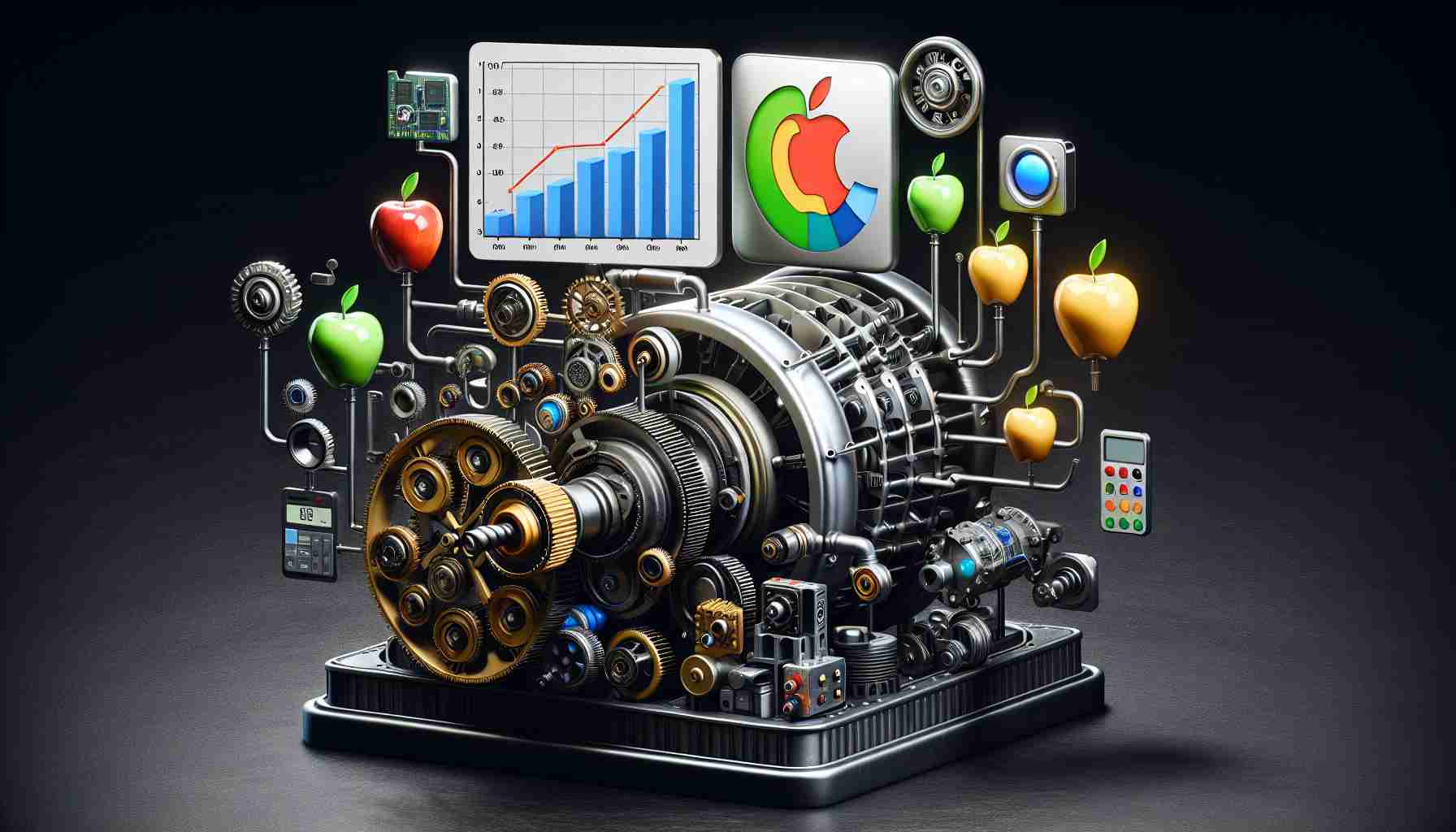Reassessing Apple’s Financial Pillars
When dissecting the earnings of global tech leader Apple, investors may find the source of its robust profits somewhat unexpected. The smartphone colossus, with the iPhone as its revenue heavyweight, retains its title as one of the most successful companies. However, shifting consumer habits and market saturation have dampened the fervor for iPhone upgrades, leading to a plateau in demand for the iconic device.
Despite the predicted downturn in Apple’s product sales for the quarter concluding in March, the company’s profit structure depicted a different narrative—one where growth has not wavered. Rather than rely solely on hardware, Apple’s services sector has emerged as the unsung hero of profitability. Though it accounts for about a quarter of total revenue, service offerings like the App Store, Apple Music, and iCloud command a gross margin that starkly outstrips that of Apple’s physical goods.
The Nuances of Apple’s Business Model
If revenue were the only measure, the iPhone would still reign supreme, contributing over half of Apple’s earnings. The true distinction surfaces upon comparing gross profits, with services approaching 40%—an impressive feat that underscores the profitability of this segment. While exact figures are veiled, the iPhone’s revenue dominance suggests it likely mirrors this profitability pattern. However, Apple’s swift-evolving profit mix hints that the title of most profitable business could soon belong to the services division.
In the face of fluctuating sales, the services sector offers a semblance of financial stability for the company and its shareholders. Amid challenges like legal scrutiny from the US Department of Justice and the shifting battleground of ‘Big Tech’, Apple’s financial resilience leans significantly on the reliability offered by its services.
Contrary views on iPhone stagnation are balanced against prospects of a transformative iPhone launch, anticipated to be equipped with cutting-edge AI capabilities. This innovation may fuel a resurgence in device sales and, concurrently, bolster the company’s thriving services.
In the chess game of profitability, Apple demonstrates a strategy that transcends product sales, pivoting toward service-driven returns. As investors reassess their stance, Apple’s evolving composition champions the belief that longevity in tech requires an adaptable playbook.
While the article outlines the importance of Apple’s services to its profit structure and touches on challenges facing the company, there are additional relevant facts and considerations that can further enrich the understanding of Apple’s financial situation and prospects:
Key Questions and Answers:
1. What are Apple’s fastest-growing services?
Apple has several rapidly growing services, such as Apple TV+, Apple Arcade, and Apple Fitness+. Their growth contributes to the overall resilience and diversity of the company’s revenue stream.
2. How significant is Apple’s expansion into markets like healthcare and financial services?
Apple’s foray into healthcare through the Health app and ResearchKit, and financial services with Apple Pay and the Apple Card, demonstrates the company’s efforts to penetrate new markets, capitalizing on their technology and user base to create new revenue streams.
Key Challenges or Controversies:
– Regulatory pressures: Apple faces increasing scrutiny over the App Store’s policies and fees, which could impact the profitability of services.
– Privacy and security concerns: Apple’s emphasis on user privacy could limit data monetization opportunities compared to competitors who leverage user data more extensively.
– Dependency on hardware: Despite growth in services, Apple’s ecosystem is still heavily reliant on hardware sales, particularly the iPhone, creating potential vulnerabilities to shifts in consumer behavior or supply chain disruptions.
Advantages and Disadvantages of Apple’s Profit Engine:
– Advantages:
– Diversification: Revenue from services reduces Apple’s reliance on hardware sales and provides more stable, recurring income.
– High-Profit Margins: Services generally have higher margins than hardware, improving overall profitability.
– Brand Loyalty: A strong and loyal customer base provides a captive market for Apple’s services.
– Disadvantages:
– Market Saturation: As hardware growth slows, Apple needs to find new ways to maintain its service momentum in a competitive market.
– Regulatory Risks: Potential changes in legislation regarding digital marketplaces could force Apple to alter its service offerings and affect profitability.
Suggested related link to explore more about Apple and its various ventures:
– Apple’s official website
Without the full article, including its context and all the details it provides, this is a conceptual overview based on publicly available information related to Apple’s profit structure and its implications for investors. For more precise insights and analytics, it would be necessary to reference the original article’s detailed content.
